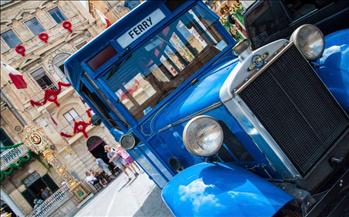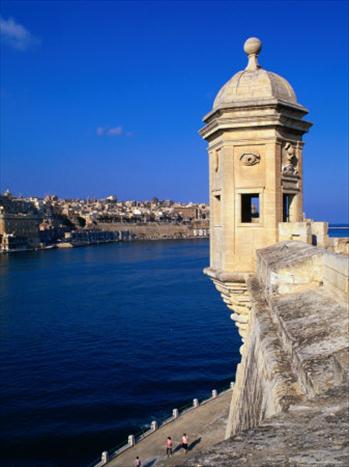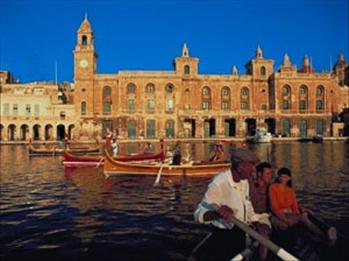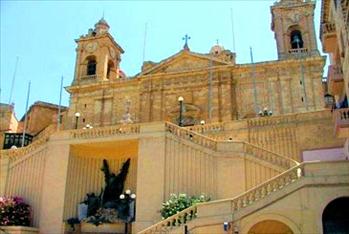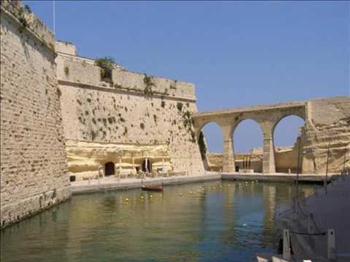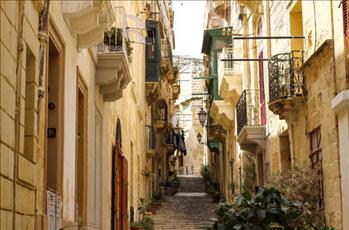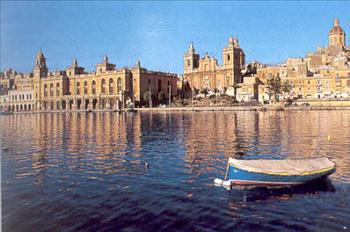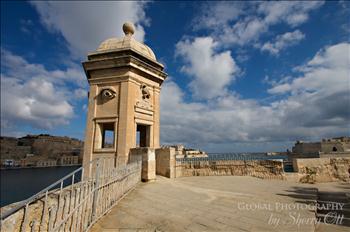Vintage Bus Tour to Vittoriosa, Cospicua & Senglea
Step back through the mists of time as you drive to the fortress of Cottonera which is widely known as the Three Cities, these being Vittoriosa, Cospicua & Senglea. These cities were built and fortified by the Knights of Malta. You first start with an informative drive through Cospicua. Cospicua has been inhabited since Neolithic times. Prior to the 18th Century it was known as Bormla, a name which is still in use. Its fortification walls, constructed to protect the town and its neighbours Vittoriosa & Senglea, were built by the Knights of Malta. Construction began in 1638 but was not completed for another 70 years. In 1722, Grand Master Marc’ Antonio Zondadari declared Bormla a city and in view of its strong bastions named it Citta Cospicua.
You will then visit Vittoriosa, ideally situated for safe anchorage and over time it has developed a very long history with maritime, mercantile and military activities. Prior to the establishment of Valletta as a capital city of Malta, military powers that wanted to rule the Maltese islands would need to obtain control of Vittoriosa due to its significant position in the Grand Harbour. Vittoriosa is now a location of several tourist attractions. The historic Vittoriosa Waterfront contains the former Palace of the General of the Galleys and the Order of St. John’s treasury. The area was refurbished in the early 2000s and both buildings are used for other activities: the former is now a casino, while the latteris home to the Malta Maritime Museum. A second museum, the Vittoriosa 1565 Museum, is also located in the town and is dedicated to the siege and the battle in the town in 1565.
The third city is Senglea, joined by a land bridge to Cospicua during the time of the Knights of St. John and as a result it became a peninsular in shape. During the time of the Knights of St. John, Senglea was used as a hunting area and was known as L’Isola di San Giuliano. In 1311 St. Julian’s church or chapel was founded. This was the first building to be constructed. On 8 May 1552 the foundation stone of Fort St. Michael was laid. Work on the fort, which was designed by Architect Pedro Pardo was completed in 1553. Construction of walled town Senglea took place during the following decade. The area, which had until the 1550s been known as Isola di San Giuliano or Isola di San Michele, was given city status by Grand Master Claude De La Sengle and was named after him.
A detailed English commentary by the driver will help you unfold the history of Valletta and the Three Cities connected with two Great Sieges of 1565 and 1942. Tour is operated by one of the first two wooden bodied buses purchased in 1921 by the Cottonera Motor Bus Company. These buses were licensed to operate routes between Cottonera and Valletta and were made by local carpenters and mechanics, later called as bus body builders. At that time the local carpenters and mechanics were encouraged to build bus bodies so that the company Cottonera Motor Bus Co. could increase its fleet rapidly. Tour leaves from Sliema Ferries (opposite of Marks & Spencer).
____________________________________________________________________________________________________________________________________________________
Reservations for this trip can be done online from this site at least 4 working days in advance or by visiting a Central Holidays Office in Paceville, St. Julian’s.
A deposit of € 10 or as otherwise stated will secure your reservation.
Addresses:-
Central Holidays
134, St. George’s Road, Paceville – St. Julian’s – STJ 3203
Other Details
Price Includes :-
- A 2 Hour Three Cities Tour by a 1920 Bus
- English commentary throughout the tour
Pick up Times :-
Cirkewwa 09:30 hrs
Mellieha 09:45 hrs
Xemxija & Golden Bay 09:50 hrs
St. Paul’s Bay 10:00 hrs
Bugibba 10:10 hrs
Qawra 10:15 hrs
St. Julian’s 10:30 hrs
Sliema 10:45 hrs
Valletta 10:30 hrs
Attard 10:15 hrs
Return transport is organised at 1500 hrs
The exact pick up time and pick up piont will be confirmed when the original tickets are picked up from one of our offices.

